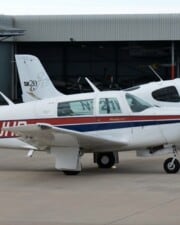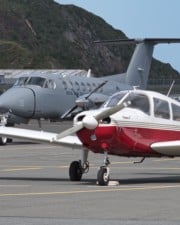Two of the “Big Three” general aviation manufacturers, Cessna and Piper are pilot favorites the world over. But which manufacturer produces the better aircraft? Let’s compare Cessna and Piper.
Table of Contents
For as long as both companies have been around, their aircraft have directly competed with one another (even after Cessna branched out into private jets with the Citation family).
Indeed, looking at both companies’ lineups of general aviation aircraft, most have a fairly obvious and direct rival.
This comparison will aim to look at the history of both companies, their best and most famous aircraft, pilots’ views on them as companies and their aircraft, the financial aspects of owning their aircraft and with any luck, the right one for you!
Quick History of Cessna
The Cessna Aircraft Company, more commonly known as Cessna, was founded as the Cessna-Roos Aircraft Company by farmer-turned-aviation entrepreneur Clyde Cessna and his business partner, Victor Roos, in September 1927.
Even as Cessna was busy designing and building what would eventually become the Cessna Model A – the company’s first aircraft – Roos resigned from the company and his shares in the company were sold to Cessna. Soon after, the company was renamed “Cessna”.
Under Cessna’s leadership, the company expanded greatly but the Wall Street Crash of 1929 put an end to this and the company closed in 1932. Two years later, the company was bought by Clyde’s nephews Dwayne and Dwight Wallace, whilst Clyde retired back to a life of farming.
Like many other aircraft manufacturers during WWII, Cessna was contracted to produce aircraft for the war effort, where they specialized in producing their T-50 Bobcat twin-engine trainer.

Once the war ended, they didn’t fall prey to the post-war collapse of the aviation industry by taking advantage of the postwar general aviation boom with the release of their now-famous Model 120 and 140.
Since then, Cessna diversified into other aspects of the aviation industry, namely private jets, agricultural aircraft and helicopters (briefly).
Today, Cessna is a part of the Textron Aviation conglomerate alongside rivals Beechcraft, Pipistrel and Hawker Aircraft (formerly).
Quick History of Piper
The company we now know as Piper was originally founded as the Taylor Brothers Aircraft Manufacturing Company back in September 1927.
Its founders were brothers Clarence and Gordon Taylor, who had designed a low-powered, two seat tandem light utility aircraft. They called their aircraft the Taylor Cub, after the name given to a tiger’s offspring (the Cub’s original engine was nicknamed the “Tiger Kitten”).

Despite gaining considerable financial backing, the company went bankrupt in 1930. Its assets were then purchased by oil engineer William Piper – one of the company’s original backers – and the company was eventually renamed Piper Aircraft in 1937.
Piper took the idea of the Taylor Cub and expanded upon it greatly before putting it into mass-production as the now-famous Piper Cub, where he could better take advantage of cost reductions.
The overwhelming success of the Piper Cub gave Piper a reputation for producing low-cost, yet high-quality aircraft, something which later became something of a trademark for the company’s future aircraft.
Despite many of their aircraft being widely popular, poor financial management saw it file for Chapter 11 bankruptcy protection in 1993. Since then, the company has passed through the hands of many different owners.
At present, Piper Aircraft’s owner is Imprimis, an investment company owned by the Government of Brunei.
Cessna and Piper Aircraft’s Main Differences
- On the whole, Cessna aircraft tend to be high-wing whilst their Piper counterparts are mostly low-wing
- This means that Cessna pilots have better view of the ground in level flight but less when banking whilst for Pipers, the opposite is true
- Cessna aircraft have their vent intakes in the wing whilst Piper aircraft have their directly behind the engine
- Piper aircraft typically have one door, located on the right hand side of the fuselage whilst Cessna aircraft typically have two doors. The doors on Cessna aircraft are typically larger as well
- Pipers have two separate fuel tanks that you must switch between whilst Cessna have two interconnected fuel tanks
- Aside from the Piper Apache, most Piper aircraft do not have rear windows whilst Cessna aircraft do, giving them better rear visibility in flight
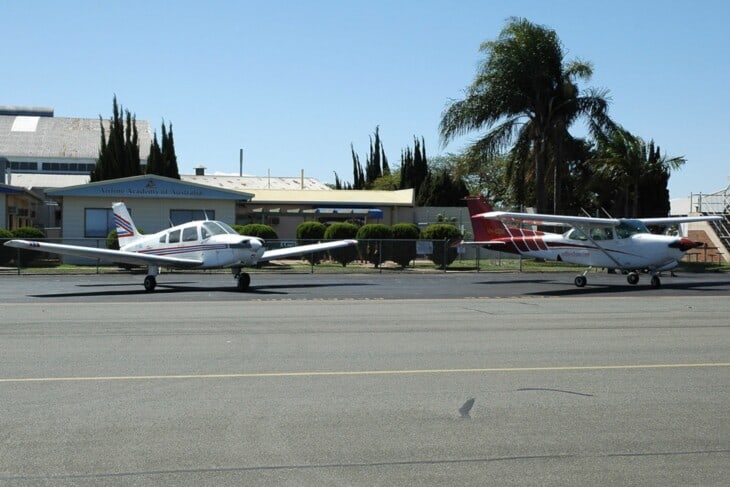
Issues with Cessna Aircraft
Despite Cessna almost being emblematic of the aviation industry as a whole, their entire fleet has received numerous criticisms over the years by avgeeks, pilots and passengers alike, putting some off their aircraft…
Quality Concerns
In 2007, Cessna announced that their highly anticipated, brand new GA aircraft, the Cessna 162 Skycatcher, would be produced in China by a subsidiary of AVIC, a state-owned Chinese aviation conglomerate.
At the time, this decision was primarily down to cost-cutting measures, with Cessna laying off many of its US workers to balance the books. However, this decision gathered significant controversy.
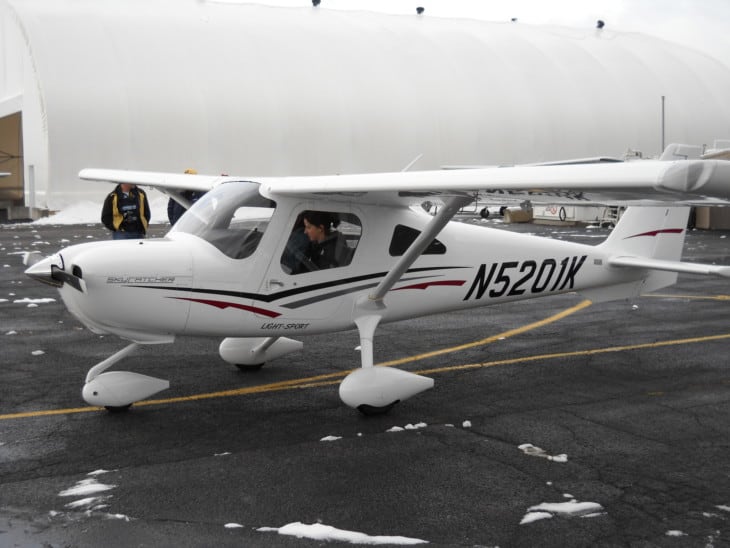
Not only because of the ties the Skycatcher would have to the Chinese government but also due to quality, as many of AVIC’s subsidiaries’ aircraft have garnered reputations for being poorly built, leading to a string of avoidable, high-profile crashes.
Even though this partnership was later terminated in December 2013 when the Skycatcher ceased production, Cessna has been mired in quality-related controversies for both the Skycatcher and other aircraft ever since.
Safety Issues
In a direct comparison of the safety records of both Cessna and Piper, a pilot is roughly 20% more likely to be involved in a crash or similar aviation incident flying in a Cessna than a Piper.
Whilst there are many reasons for this – the aforementioned quality concerns not among them – such as the increased number of inexperienced pilots using Cessnas relative to Pipers, this figure is still astonishingly high.
That being said, it’s not all bad. A comparison of the safety records also reveal you’re far likelier to survive a crash in a Cessna than a Piper (by about 15%).
Though it must be stated that neither companies’ aircraft are inherently dangerous. Indeed, many of their aircraft repeatedly rank as being some of the safest in the skies when in the hands of a competent pilot.
Speed
Although there are certain cases where this is not the case (especially when it comes to the older single-engine pistons), on the whole, Cessna aircraft are considerably slower than their nearest Piper counterpart.
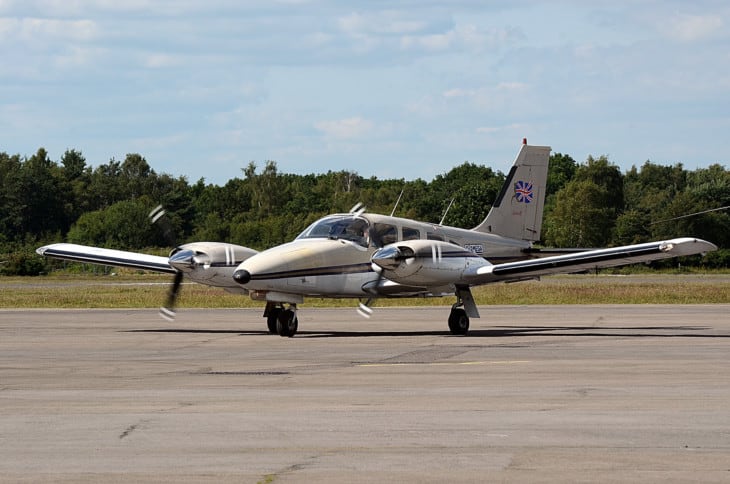
This can best be seen with the Piper Seneca, whose cruise speed is roughly 216 mph (348 km/h; 188 kn) whilst that of its nearest competitor, the Cessna 310 is only 205 mph (330 km/h; 178 kn).
What this means is that for pilots and flyers looking to travel short-to-medium distances quickly, say, for business, are more likely to choose a Piper over a Cessna.
Issues with Piper Aircraft
Although Piper Aircraft is one of the oldest and most well-known aircraft manufacturers in the world, their entire aircraft lineup – both past and present – have fleet-wide issues that have put many pilots off the company.
Fuel Tank Problem
One of the key issues facing Piper aircraft across all classes is their two separate fuel tanks.
Where Cessnas also have two fuel tanks, they’re interconnected, allowing you to use both at the same time. On Pipers, however, their fuel tanks aren’t interconnected, meaning you have to switch between the two when you’ve used all the fuel in one.
For Piper, this design was supposed to be intuitive: you’d use it as a halfway point. However, this also presents a key danger: running out of fuel.
And it’s not just a hypothetical, it’s happened before. With pilots focusing on everything else, many have forgotten to check the fuel gauge and switch over, resulting in them running out of fuel mid-flight.
Running out of fuel aside, most pilots don’t want to be constantly checking to see if one tank is nearly empty; they just want to fly their aircraft.
High(er) Stall Speed
Both Cessnas and Pipers are famous for being used as trainers. However, one of the biggest downsides of using a Piper as a trainer is that they have, on the whole, far higher stall speeds than Cessnas.
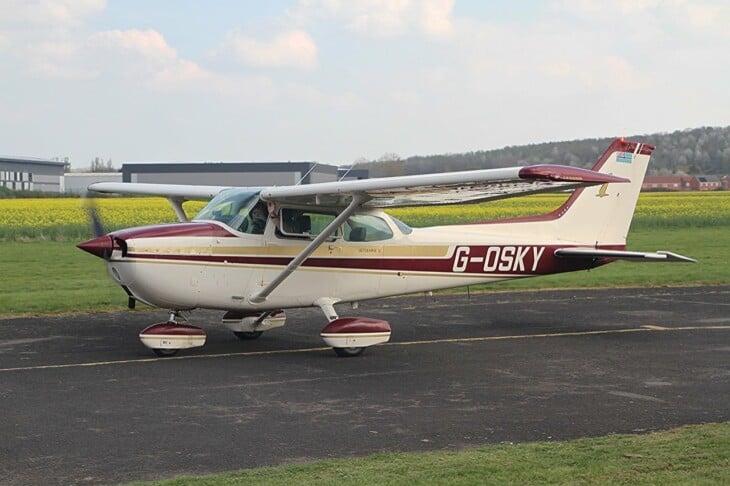
As student pilots are often inexperienced and prone to attempting maneuvers that increase the likelihood of a stall, a higher stall speed is not ideal and perhaps explains why more flight schools use aircraft like the C152 and C172 than the Piper Arrow.
For more experienced pilots, a higher stall speed is also less desirable if the pilot enjoys doing aerobatics, as some of these maneuvers reduce the aircraft’s speed dangerously close to the stall speed.
Whilst this can be avoided by an experienced pilot or flight instructor, for some, it’s simply too much to risk.
Limited Lineup
When looking across the aircraft produced by Piper, there’s a noticeable gap at the upper end of their lineup: business jets.
Whilst Cessna allow progression for their business/corporate aircraft – going from a single-engine like the C208 Caravan, to a twin-engine like the C402 Businessliner and then to the Citation family – Piper don’t.

Instead, they have consolidated their single and twin-engine piston/turboprop aircraft, which means for any operator looking to progress upwards as their needs grow, Piper will not suit them in the long-haul.
And to make things worse, it’s unlikely that they will fill this void in the coming years due to the failure of the Piperjet, which was supposed to be their answer to the low-end Citation jets.
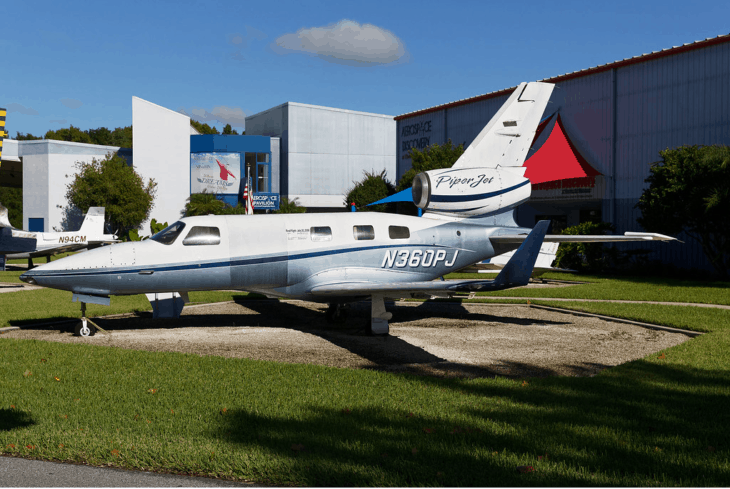
Pricing
For most pilots, cost is the largest determinant as to which aircraft they buy. In terms of brand new, fly-away costs, Pipers generally come out as marginally cheaper than their Cessna counterparts in all classes.
In many cases, such as that of the Piper Cherokee and Cessna 182, the difference can be as little as $15,000, with the Cherokee having a new price of $500,000 whilst the 182 sits at $515,000.
When it comes to the secondary market the same is also generally true, although there are numerous factors that may distort this.
For example, the average selling price of a 1978 Piper Seneca with an average 6000 total hours on the fuselage is about $180,000, whilst a 1978 Cessna 310 with the same amount of time is about $240,000.
But acquisition costs are only the first half of the equation. The other side of it is operational costs, where the same theme is carried through, even if it’s tighter than before.
Indeed, looking at the hourly operational costs of both the Cessna 206 Stationair and the Piper Cherokee Six, they each have hourly operational costs of $289.42 and $282.26 respectively.
Which one is better, Cessna or Piper Aircraft?
Simply put: neither is inherently better than the other. Although Cessna are more popular, Piper has plenty going for it.
Cost:
Piper aircraft are on average 3% cheaper to acquire new or 33% cheaper to acquire on the secondary market. Similarly, they are also 2.5% cheaper to operate than their Cessna counterparts.
Ease of maintenance:
Due to how widespread and simplistic both companies’ aircraft are, maintenance for both is relatively easy. That being said, Cessna fuel and engine systems are far easier to access and change than their much simpler Piper counterparts.
Performance:
On the whole, Piper aircraft are better known for their higher cruising speeds (though not always) whilst Cessna aircraft are better known for their longer ranges (and higher speeds when talking about the older single-engine pistons).
Both companies’ aircraft are well known for their maneuverability and ease of handling, with the winner for each of these mostly being down to personal preference.

Conclusion
When it comes to a direct comparison of Cessna and Piper, it’s safe to say there is no “one size fits all” answer as to which is better. At the end of the day, it’s simply a matter of personal preference.
Cessnas are more iconic, have better range, are easier to maintain, less prone to stalling and all in all have a much broader lineup of aircraft allowing for progression.
At the same time, Pipers are generally cheaper, faster and have fewer lingering safety and quality concerns all whilst providing better visibility in level flight.
Ultimately, the best company for you is the one whose aircraft best line up with what you’re looking for in your aircraft. Happy flying!
Related Posts


